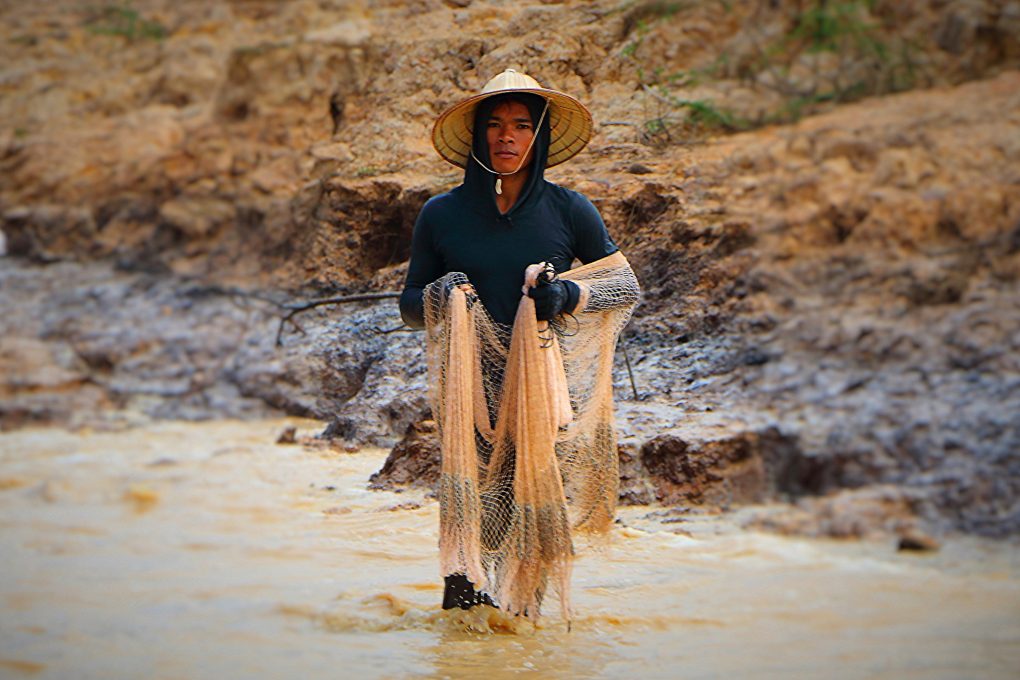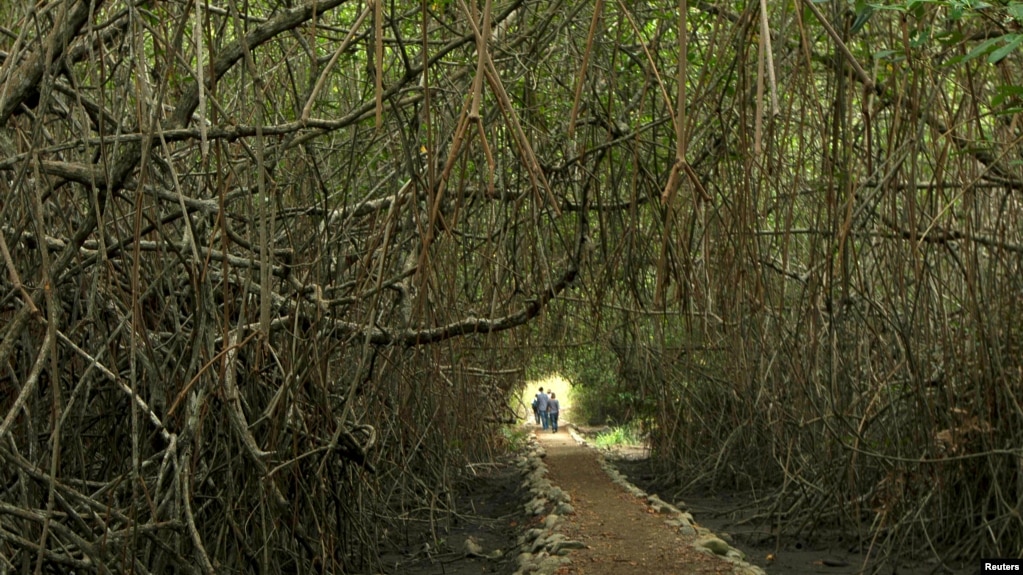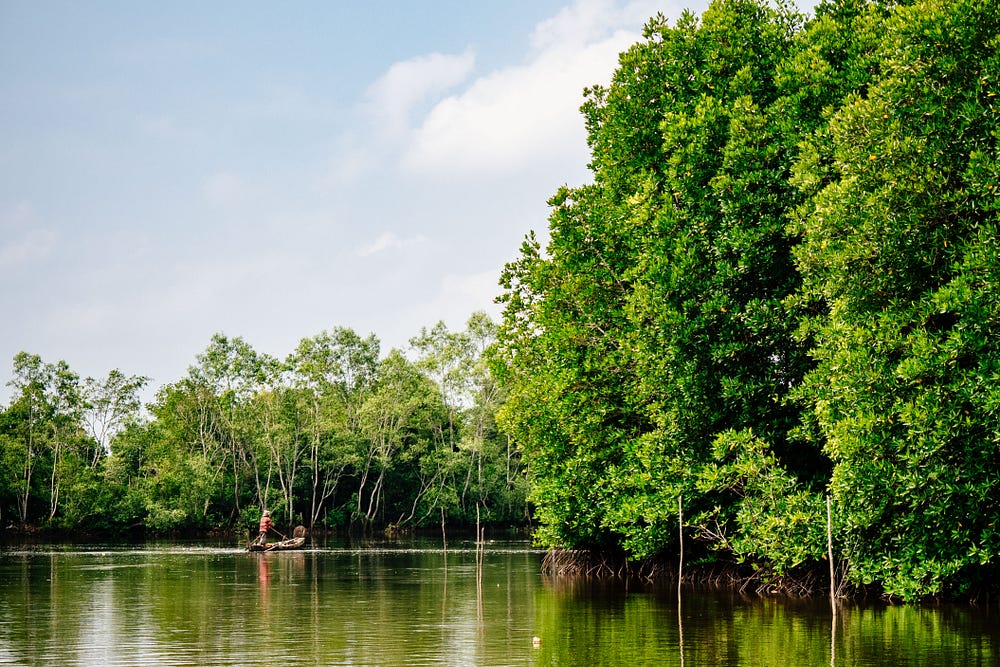|
The MAP News |
|
|
FEATURE STORY
MAP posts Endangered Species Associated with Mangroves list
USA - The IUCN Red List of Endangered Species lists most flora and fauna into seven categories ranging from “Least Concern” to “Extinct”. These categories are based on the current population of the species, the population trend (whether it is increasing or decreasing and how rapidly) and the threats faced by those species. Hunting, habitat loss/degradation and climate change are the three biggest threats to the natural world and these problems are increasing the number of endangered species rapidly. Some of the species associated with Mangroves range from “Vulnerable” to “Critically Endangered”. The list covers fauna that rely on mangroves for either all or part of their lives as well as flora that are part of the Mangroves themselves. Many of these species are closely associated with each other and interlinking ecosystems, meaning the loss of one species can have devastating effects on another. The loss of flora and fauna species and biodiversity is yet another reason why protecting mangrove habitat is so important. READ MORE. AFRICA Protecting Tanzania’s mangroves  TANZANIA - Lush mangrove forests line the meandering channels of the Rufiji River Delta, south of the commercial capital Dar es Salaam on the east coast of Tanzania. It’s one of the largest mangrove areas in Africa, and like mangroves everywhere, they’re under threat. Mangrove trunks are being cut for timber, poles and burned for charcoal; meanwhile, trees are being cleared to make way for rice paddies. Tanzanian law strictly protects mangroves given that they are the property of the State. Though the government initially encouraged people to settle in the Delta in the early 1970s, strict protection means local women aren’t supposed to collect firewood from the forest (though they often do) and every December through January since the 1990s, agents from the Tanzanian Forest Service (TFS) have burned farmers’ temporary stilt huts (madungu) and new rice farms, in an attempt to discourage further deforestation. READ MORE ASIA Mekong fisheries threatened by Chinese dams  CHINA - Large dams on the Mekong River in China’s Yunnan province have considerable impacts on downstream river flows. This is shown by new research by myself and colleagues at Aalto University in Finland, and published recently in the Journal of Hydrology. The Mekong originates in China where it is known as the Lancang, before flowing through Thailand, Laos, Cambodia and Vietnam. China has built a cascade of six hydropower dam projects on the upper reaches of the Mekong River. The first project, known as Manwan, (1,670MW), became operational in 1993 and the latest, known as Nuozhadu (5,850MW), began operations in 2014. The cascade has the capacity to produce 15,000MW of power and store over 23 cubic kilometres of water, 28% of the annual river flow at the border of China and Thailand. Downstream countries are also exploiting their hydropower resources, with Laos recently announcing it will start construction of a third contentious dam on the Mekong. READ MORE China leads world in efforts to protect biodiversity, ecosystem CHINA - China has gone further than any other country in bringing the science and economics of the environment into decision-making, and its efforts are a model for the world, said an environmental scientist at Stanford University. "In the face of deepening environmental crisis, China has become very ambitious and innovative in its new conservation science and policies and has implemented them on a breathtaking scale," said Gretchen Daily, professor of biology at Stanford and co-author of recent research on China's biodiversity and ecosystem services. Following severe environmental degradation from rapid economic development, China is now advancing policies to secure biodiversity and ecosystem services, according to the research recently published in Proceedings of the National Academy of Sciences. The research team used eco-mapping software to identify places of high ecological importance for the country. The Chinese government is expected to establish a series of protected areas based on the research findings as part of its 21st-century ecological initiative. The research identified five vital life support services in China: flood control, sandstorm control, provision of abundant water, stabilization of soil and biodiversity. A Race to Document Rare Plants Before These Cliffs Are Ground to Dust  CAMBODIA - Millions of years ago, a cluster of coral reefs stood firm here as the water receded, leaving them surrounded by the marshy, mangrove-studded Mekong Delta. Today, these reefs have been carved by the wind and rain into spiky limestone cliffs known as karsts that stand stark against the Cambodian landscape, even as the lowland rain forest around them has been denuded by centuries of intensive rice cultivation and logging. The karsts are full of nooks and crannies that have nurtured highly specialized plants and animals found nowhere else. They are also important to humans, studded with small altars and temples that are thought to be homes to neak ta, landscape spirits in the local animist pantheon. Soon, they will be gone. A small group of scientists are now racing to document rare plant life in these limestone karsts before local companies quarry them to dust and grind them up for production of the cement that is fueling this country’s building boom. READ MORE Aquaculture still profitable in China, surprising many CHINA - Data from Chinese stock market filings shows the country’s big name seafood firms are struggling to generate significant growth from alternative business and that aquaculture remains surprisingly profitable, despite much publicly declared pessimism about aquaculture among Chinese industry figures. Leading firm Zoneco is generating better margins from aquaculture than it is from its newer, much-hyped seafood import and distribution activities, while its new leisure division is taking significant losses. China’s leading shrimp exporter Guolian Aquatic made CNY 890.4 million (USD 129.6 million, EUR 120.4 million) in revenue in the first six months of 2016, accounting for 90.1 percent of the firm’s total revenues. Some 94.6 percent of Guolian profits – CNY 104.21 million – came from the “processed products” division of the business.This division also provided the highest profit margins at 11.6 percent, compared to 6.9 percent margin for feed product sales and 1.4 percent margin on sales of seedlings. Guolian’s feed and seedlings businesses accounted for 8.1 percent and 1.7 percent of total revenues respectively, meaning the firm has a way to go in its ambitions to be a fully integrated operator with diversified revenue streams. READ MORE AMERICAS The human element of mangrove management  USA - As global climate change continues to threaten coastal communities in the tropics, governments have increasingly focused on the promotion and conservation of mangrove forests for their protective qualities. Mangroves — trees and shrubs that grow in tropical estuaries — are among the world’s most productive ecosystems and, compared to other forest systems, have an impressive capacity to sequester and store carbon at high rates. They also serve as an important physical buffer, protecting coastal areas from storm surges and acting as “bioshields.” Despite these clear benefits, since 1980 the world has lost approximately 20 percent of its mangrove forests. With this in mind, there is a growing need to understand the factors- both biophysical and societal- that contribute to sustainable mangrove management. READ MORE Mangrove-dependent Animals Globally Threatened  USA - Substantial numbers of terrestrial vertebrates are restricted to mangrove forests. Many of these specialized species are listed as threatened by the International Union for the Conservation of Nature. Prospects for mangrove-restricted animals are bleak, because more than two percent of mangrove forests are lost each year. More than 40 percent of a sample of amphibians, reptiles, mammals, and birds that are restricted to mangrove ecosystems are globally threatened with extinction, according to an assessment published in the July/August issue of BioScience. The study, by David A. Luther of the University of Maryland and Russell Greenberg of the Smithsonian Migratory Bird Center, was based on an extensive literature search and expert consultations. The conclusions emphasize the vulnerability of animals that are dependent on a habitat rapidly being lost or degraded through coastal development, overexploitation, pollution, and changes in sea level and salinity. READ MORE Mangrove recovery: gains and losses MEXICO - In a ceremony held on World Wetlands Day February 2, federal authorities congratulated themselves after a study they presented showed that over 11,000 hectares of mangroves had been recovered between 2010 and 2015. The declaration was made by José Sarukán Kermez’, coordinator of Mexico’s Biodiversity Commission (Conabio), who celebrated alongside federal Environment Secretary Rafael Pacchiano Alamán. It was the former who stated it was possible to recover mangroves even after they had been disturbed. What both officials left out of their statements was that during that same five-year period, 6,407 hectares of mangrove swamps and wetlands were either lost or damaged, primarily by human activity, reported the news website Animal Político. Government estimates in the 1980s put the coverage of mangroves in Mexico at 856,405 hectares. By 2010 the area had decreased by 91,600 hectares, or just over 10%. READ MORE Shrimp EMS in Latin America identified LATIN AMERICA - Researchers have identified four strains of Early Mortality Syndrome (EMS) found in Latin American shrimp farms last year. EMS is a fatal disease occasionally found in farmed shrimp throughout the world, with an estimated global cost to industry of USD 1 billion (EUR 937 million). Four Vibrio parahaemolyticus strains of EMS, or acute hepatopancreatic necrosis disease (AHPND), were isolated from either stomachs of diseased shrimp or sediment samples from AHPND-affected farms in Latin America. “Our findings of 4 pirABvp-containing V. campbellii strains confirm that these strains are pathogenic to shrimp in bioassays and cause AHPND,” wrote Jee Eun Han, a scientist with the CJ CheilJedang Feed & Livestock Research Institute in South Korea, in a new Global Aquaculture Advocate article. Identifying the different strains of EMS will aid in the development of methods to fight the disease. VIEW SOURCE EUROPE Global Study: Governments Ill-equipped to Protect Mangroves  U.K. - The majority of the world's mangroves are managed by government agencies that are too poorly equipped to protect them, according to a global review of the forests known for their effectiveness in absorbing carbon. Four of the five countries with the largest mangrove areas are middle income nations - Indonesia, Brazil, Mexico and Nigeria - which lack the capacity to protect their millions of hectares of mangrove forest, the Center for International Forestry Research (CIFOR) said on Thursday. Mangroves' management often falls under the jurisdiction of multiple ministries, from forestry to fisheries, creating a maze of vague responsibilities that deliver little protection on the ground, the report said. Global attention on mangroves has grown due to their effectiveness in absorbing atmospheric carbon, one of the main drivers of climate change, as well as sheltering fisheries and protecting against coastal erosion. Compounding the mangrove management problem is a lack of clear or documented rights and incentives for the communities living in the forests to use them sustainably, CIFOR said. READ MORE Mangroves and marshes key in the climate change battle UK - Recent scientific advances have demonstrated that coastal wetlands - mangrove forests, tidal marshes and seagrass meadows - are incredible long-term carbon sinks, storing carbon in the plants themselves but more importantly in the soils below for hundreds to thousands of years. In fact, the same area of coastal wetlands can be more efficient as a carbon sink than most terrestrial forests. Every year more policy and decision makers invest in ‘coastal blue carbon’ by using wetland conservation and restoration as a natural solution to meet international greenhouse gas commitments. The carbon sequestration potential of coastal wetlands sparked interest in whether other coastal and marine ecosystems, such as coral reefs, kelp forests, phytoplankton, and marine wildlife, can similarly help in climate change mitigation. Do these marine ecosystems serve as long-term carbon sinks, and should they be considered in climate mitigation strategies? It appears that the answer is no. Coastal wetlands are truly unique among marine and coastal ecosystems in their ability to mitigate climate change - that is the conclusion of an analysis we published yesterday in Frontiers in Ecology and the Environment. Based on our understanding of how carbon moves through kelp forests, marine life and other marine ecosystems, it seems they cannot help us mitigate climate change in the way that coastal wetlands can. READ MORE We'd love to hear from you! Write us your stories or respond to ours and we'll select one to feature here, giving you "The Last Word"!
|
Action Alerts:Save the mangrove forest in Pitas (Sabah), Eastern Malaysia
|
Mangrove Action ProjectClick here to view past newsletters |
|
Search News Archive
Thursday, February 16, 2017
MAP News Issue 410 - February 18, 2017
Friday, February 3, 2017
MAP News 409, February 4, 2017
|
The MAP News |
|
|
FEATURE STORY
Bay of Bengal: depleted fish stocks and huge dead zone signal tipping point  BANGLADESH - The Bay of Bengal’s basin contains some of the most populous regions of the earth. No less than a quarter of the world’s population is concentrated in the eight countries that border the bay. Approximately 200 million people live along the Bay of Bengal’s coasts and of these a major proportion are partially or wholly dependent on its fisheries. For the majority of those who depend on it, the Bay of Bengal can provide no more than a meagre living: 61% of India’s fisherfolk already live below the poverty line. Yet the numbers dependent on fisheries are only likely to grow in years to come, partly because of climate change. In southern India drought and water scarcity have already induced tens of thousands of farmers to join the fishing fleet. Rising sea levels are also likely to drive many displaced people into the fishing industry. But the fisheries of the Bay of Bengal have been under pressure for decades and are now severely depleted READ MORE AFRICA Farmers encouraged to practice climate-smart agriculture KENYA - As effects of climate change continue to bite, farmers have been urged to embrace climate smart agriculture like planting trees alongside their crops. Towards this end, a charity organization Hindu Religious and Service Centre (HRSC) affiliated to the Hindu Council of Kenya is championing tree planting in various parts of the country. So far, the organization has undertaken the tree project in Kitui, Machakos, Narok and Naivasha. “The program started in 2005 and we have been planting nearly 8,000 tree seedlings in different regions twice a year during rainy seasons,” says Shantibhai Shah, HRSC co-ordinator. By the end of last year, they had planted 95,495 trees in 20 regions, says Shah. To enhance forest cover in Kenya by consistent and sustainable tree planting, the group plans to plant 150,000 trees by the end of this year. The organization works with local authorities, county governments, communities, and schools to make for a successful and sustainable tree-planting program. To achieve their goal, the organization partners with local communities, environmental groups, community forest associations. READ MORE ASIA Police in Bangladesh clash with protesters over power plant  BANGLADESH - Police in Bangladesh’s capital fired tear gas and rubber bullets on Thursday to disperse protesters demanding cancellation of plans for a massive coal-fired power plant near ecologically sensitive mangrove forests on the coast. Five people were injured. The protesters, consisting mostly of leftist political groups and citizens, had called for an eight-hour general strike in Dhaka on Thursday. The violence took place at Shahbagh intersection in Dhaka, but most of the city was unaffected. The government insists that the planned 1.3-gigawatt Rampal power station near the Sundarbans, a world heritage site, is key to reaching its target of 24 gigawatts of electrical capacity by 2021. UNESCO says the plant poses a serious threat to the Sundarbans, a low-lying delta region comprising about 200 islands at the northern fringe of the Bay of Bengal. The $1.8 billion project, approved in 2012, is a joint venture between Indian and Bangladeshi state power companies. It calls for building what would be Bangladesh’s largest coal-fired power plant just 65 kilometers (40 miles) from the Sundarbans. READ MORE Shrimp farm threatens indigenous community's forest and rights  MALAYSIA - The mangrove forests in Pitas, Malaysia are under threat. In less than two years, more than 2,000 acres of mangrove forests have been destroyed to create shrimp ponds, violating the local communities’ rights and environmental regulations. The last 1,000 acres of community mangrove forests are now also targeted for expansion. Please help the indigenous communities in Pitas to protect and conserve their remaining forests. In 2010, the Malaysian government launched a new economic initiative aimed at turning Malaysia into a high-income economy by 2020. One of the projects under this plan sought to tackle extreme poverty in the district of Pitas, one of the poorest in Sabah, by establishing the country’s largest shrimp farm and promising job opportunities for local communities. Instead, the project has led to the destruction of the mangrove forests which are their main source of food and income. So far, all of the communities’ complaints and calls for action have been unanswered. The communities’ hope is that strong international support will lend increased weight to the letter, which they will resubmit to the Sabah Chief Minister, Musa Aman, along with the list of all endorsements. Please consider giving them your support by signing the letter before 15th February 2017. SIGN PETITION Poverty alleviation' shrimp farms destroy mangrove forest, grab indigenous land MALAYSIA - A government-led shrimp farming project meant to tackle extreme poverty in northern Sabah, Malaysian, won local support in 2010 by promising job opportunities for impoverished indigenous communities. Six years on, mangrove forests local people depend on for food, materials and income are closed off and being cleared - but the jobs have yet to materialize. "Since the project started, more than 2,000 acres of mangrove forest have been destroyed to make space for shrimp ponds. Our land has been cleared out and we are not allowed near the ponds. The land clearing has also affected the local fauna and endangered a highly delicate environment, home to more than 300 proboscis monkeys and numerous kinds of birds, including rare birds such as hornbills and kingfishers." READ MORE VIEW VIDEO Socio-Ecological assessment investigates trends and drivers of change affecting mangroves MYANMAR - Myanmar’s coastal state of Rakhine is prone to multiple natural hazards and people’s vulnerability to these hazards is further exacerbated by weak infrastructure and chronic underdevelopment. Against this background, the Program for Increased Disaster Management and Resilience Against Natural Disaster (IDM-RAND) was launched in 2014 as a consortium of organisations led by International Organisation of Migration (IOM) and comprising ACTED, Swanyee Development Foundation and Asian Disaster Preparedness Centre. In a secondary review conducted at project inception, IDM-RAND found that despite evidence of widespread and accelerating encroachment of Rakhine’s mangrove forests, management of this critical resource is only weakly integrated into Disaster Risk Reduction (DRR) programming in the state. Moreover, weaknesses and contradictions persist in the existing evidence base regarding drivers of mangrove degradation, existing levels of mangrove coverage in the state and rates of change over time. READ MORE How ‘jobless men managing the sea’ restored a mangrove forest in Java  INDONESIA - For the last decade Mashadi has been the major local force behind environmental efforts, particularly mangrove restoration. Unwilling to quietly settle for a situation with no solutions, Mashadi approached village elders and an ex-village headman, Rusjan. In 2005, he and Rusjan formed a local group, Mangari, with an initial membership of 25 people. The group focused on replanting areas of the coastline that had been damaged and degraded. Initially local villagers thought Mangari’s activities odd, crazy even. Members were locally referred to as “jobless men managing the sea.They didn’t see the economic value of mangroves to aquaculture ponds,” Mashadi related. “It’s true that there was no immediate value. You couldn’t eat mangroves, for example.” Societal scorn and a dearth of seedlings discouraged members of the small outfit. The initial group of 25 people dwindled to 11, which made it difficult for the team to check the success of their saplings. Mashadi admitted that his initial lack of knowledge on mangrove cultivation also stymied his efforts. At first, he paid scant attention to timing or weather when planting. He did not regard location much either. “We planted right at the brine water line.” Waves wiped out all their seedlings. Then Mashadi searched for references. He learned that October to December was the best period to plant mangrove. He reduced planting parties to once a year and set an annual goal to plant a hectare’s worth of 1,000 seedlings. Today, the Mangari team concentrates on planting riverbanks and abandoned aquaculture ponds. READ MORE AMERICAS Editor's Note: In 2011 MAP joined Eco Viva and Asociacion Mangle in El Salvador to initiate a mangrove restoration training workshop. After the workshop, participants commenced a very ambitious and successful restoration effort that has helped restore a large swathe of mangroves in the Jiquilisco area. From the news report below, it appears that good work is still in progress with renewed support and efforts by the local communities, NGOs and government. 40 Islands in Bay of Jiquilisco Added to National Protected Areas EL SALVADOR - In another win for locally-led conservation efforts, Ministry of Environment announces funding to protect wetlands and communities. The Ministry of Environment announced yesterday that it would be incorporating 42 islands into El Salvador’s System of Natural Protected Areas. Forty of these islands are located in the Bay of Jiquilisco complex, and two are in the Laguna de Olomega. The Ministry also signed an agreement with the UNDP launching an effort to protect five wetlands of international importance in El Salvador, including the Bay of Jiquilisco. The Global Environmental Facility (GEF) has contributed $2.2 million over the next four years to fund the initiative, called “Conservation, sustainable use of biodiversity, and maintenance of ecosystem services in protected wetlands of international importance.” The Bay of Jiquilisco was declared a Ramsar Site and wetland of international importance in 2005. READ MORE The Human Element of Mangrove Management  USA - As global climate change continues to threaten coastal communities in the tropics, governments have increasingly focused on the promotion and conservation of mangrove forests for their protective qualities. Mangroves — trees and shrubs that grow in tropical estuaries — are among the world’s most productive ecosystems and, compared to other forest systems, have an impressive capacity to sequester and store carbon at high rates. They also serve as an important physical buffer, protecting coastal areas from storm surges and acting as “bioshields.” Despite these clear benefits, since 1980 the world has lost approximately 20 percent of its mangrove forests. With this in mind, there is a growing need to understand the factors, both biophysical and societal, that contribute to sustainable mangrove management. Countries are recognizing the importance of identifying mangrove management approaches that deliver results on the ground. In Tanzania, there is a growing recognition of the weakness of top-down mangrove protection approaches. Joint forest management and group rehabilitation schemes with local communities are increasingly being proposed in an effort to foster more community-led management processes. READ MORE NASA releases images of dramatic deforestation in Cambodia  Cambodia has one of the world’s highest rates of deforestation, losing a Connecticut-size area of tree cover in just 14 years. This week, NASA released before-and-after satellite images of plantation expansion in central Cambodia that provide a dramatic example of the Southeast Asian country’s fast-paced land cover changes. Ringed by Thailand, Laos, and Vietnam, Cambodia was once covered in lush rainforests. In them lived now-Endangered animals like Indochinese tigers (Panthera tigris corbetti), wild cattle called banteng (Bos javanicus), and two species of colorful monkeys called doucs, as well as many other kinds of plants and animals. However, forest conversion for agriculture and other purposes has reduced wildlife habitat significantly, and tigers are now regarded as functionally extinct in Cambodia. According to the UN’s Food and Agriculture Organization (FAO), just 3 percent of Cambodia’s forests were primary as of 2015. And data from the University of Maryland (UMD) visualized on the forest monitoring platform Global Forest Watch shows tree cover loss skyrocketed over the past decade, from around 28,500 hectares lost in 2001 to nearly 238,000 hectares lost in 2010. READ MORE EUROPE Forests 'held their breath' during global warming hiatus, research shows  UK - Global forest ecosystems, widely considered to act as the lungs of the planet, 'held their breath' during the most recent occurrence of a warming hiatus, new research has shown. The international study examined the full extent to which these vital ecosystems performed as a carbon sink from 1998-2012 - the most recent recorded period of global warming slowdown. The researchers, including Professor Pierre Friedlingstein from the University of Exeter, demonstrated that the global carbon sink—where carbon dioxide is removed from the atmosphere and stored in the natural environment - was particularly robust during this 14 year period. The study shows that, during extended period of slower warming, worldwide forests 'breathe in' carbon dioxide through photosynthesis, but reduced the rate at which they 'breathe out'—or release the gas back to the atmosphere. The team believes the crucial study offers a significant breakthrough for future climate modelling, which is used to predict just how different ecosystems will respond to rising global temperatures. READ MORE Thank you for your Year-End donations! Donations are gladly accepted throughout the year. Happy 2017! |
Action Alerts:Save the mangrove forest in Pitas (Sabah), Eastern Malaysia
|
Mangrove Action ProjectClick here to view past newsletters |
|
Subscribe to:
Posts (Atom)
-
The community of adults and youth in Cayman Islands has come together recently to release a series of educational videos. Each is geared to...
-
By Alfredo Quarto, Program & Policy Director Co-founder, MAP There is a rather urgent situation concerning the bio-invasion of the Son...
-
By: Isabel Robinson, MAP Volunteer Intern Some months ago I decided to come to Thailand and do an internship in mangrove conservation, ...
MAP News Issue #596 = April 20, 2024
ENTRIES NOW OPEN! Mangrove Photography Awards 2024 10 Years Celebrating Mangroves GLOBAL - MAP has launched our 10th Mangrove Photograp...










